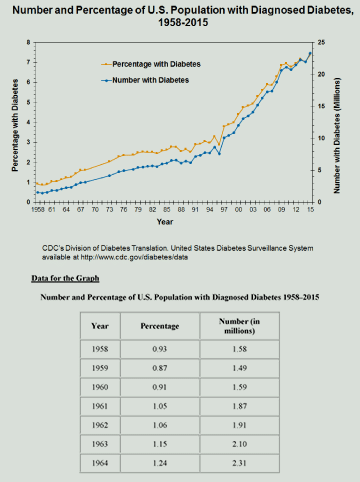
Mary was a fit, attractive 32-year-old mother of three when we first met. On the outside she looked quite put together, yet she was suffering from debilitating chronic fatigue, brain fog and pain to the extent she was losing her confidence in her ability to care for her family. After our initial consult I knew that environmental toxin exposure was a major player in her condition and was determined to help her begin the process of recovery.
I hear Mary’s story on a weekly basis. When left unchecked, environmental exposures can build up over time and eventually rob us of our health. In this four-part series I would like to paint a picture of our current state of toxin exposure and help guide you through an orderly program to maximize your body’s natural ability to expel these substances—a process commonly called detoxification.
However, I also meet skeptics on a daily basis, so I want to devote part one of this series to a discussion of environmental toxin exposure. Is it real or just a scare tactic of conspiracy theorists trying to find ‘the boogey man’ in every product we buy, food we eat or park we plan in? So, let’s start with some basic facts. In part two, I will then review the technical data on environmental toxins and their associations with chronic disease. Part three will shift to our bodies and how they were designed to deal with this exposure and eliminate. Finally in part four we will discuss a plan for maximizing your bodies detoxification capabilities and minimizing environmental exposures.
Part One:
Environmental Toxin Exposure: Is It Real?
- 25–30% of pediatric patients will have Type II Diabetes by 2020.
- 50% of Americans are either diabetic or prediabetic.
- 1 in 12 Americans suffers from an autoimmune disease.
- 1 in 2 Americans are expected to get cancer in their lifetime.
- 1 in 8 women are expected to get breast cancer.
- 1 in 68 children currently have autism.
- 1 in 3 over 85 will develop dementia.
- 1% of all kids have some sort of nut allergy.
In 1996, my first year of medical school, I was told by my professors that if I ever saw a child with diabetes it HAD TO BE Type I because kids didn’t get Type II, which at that time was true.
In 1996, my first year of medical school, I was told by my professors at the Medical College of Virginia that if I ever saw a child with diabetes it HAD TO BE Type I because kids didn’t get Type II, which at that time was true. In 1980, there were no cases in the pediatric literature of Type II diabetes, it was a disease of adults and not children. At the same time, only 5% of adults had Type II diabetes—not the 15% that have it now. I also heard in class that I would never see autoimmune diseases because the were so uncommon. Treating autoimmune diseases (like hypothyroidism, rheumatoid arthritis, multiple sclerosis, celiac disease) were for the specialist and universities, not the physicians in private practice.
In 1996, this new neurodegenerative ( brain-based ) disease of kids - known now as Autism - was rare.
In 1996, this new neurodegenerative (brain based) disease of kids—known now as Autism—was rare. About 1 in 600 children would be diagnosed with it, about the same rate as Down’s Syndrome. Today, everyone knows at least someone who has a child with some degree of Autism or one of the Autism Spectrum Disorders. Its current incidence is 1 in 63.Why the huge increase?
Are there other diseases that are on the rise?
The first time I remember anyone I knew having a nut related allergy was my freshman year in college. One of my friends got exposed to peanuts in a cookie he ate at a fall retreat camp and he had to go by ambulance to the ER for treatment. Now at my daughter’s physical therapy clinic, we cannot pack any nuts to eat because so many kids have life-threatening nut allergies that just her eating her own nuts on a therapy table could risk the life of the next child to sit at the same place.
Cancer is another disease on the rise. In 1900, the lifetime risk of getting any cancer was 1 in 100, in 1990 it was 1 in 3, and as of 2015 it is 1 in 2. Cancer has been around since antiquity, but was uncommon before the late 19th century, Click here for a timeline on the history of cancer.
Folks, this ain’t right! What is going on here? What major genetic shift has occurred? What major food sourcing has changed? What can explain such radical numbers?
Aren’t we just living longer?
A common objection I often hear is that we live so much longer these days than people did ‘back in the day.’ But you must compare apples to apples to see this as well, just ain’t so. Attached here is an article that discusses this. The basic concept is that yes, many children died before the age of five and many women died in childbirth during the Victorian Era of British Empire. So, if you take a bunch of zeros, ones and twos to make averages you get a very low number for the life expectancy in an era riddled with infant and birth mortality. But if you remove these deaths (which are now rare due to modern technology and techniques), in Victorian England, the life expectancy for a male was about 74 - and this was before antibiotics and effective surgery. Also, their rate of chronic diseases was 10% of ours today.
No, we must face the reality that our health as a society is, in fact, deteriorating. We are witnessing an increase in the incidence of common chronic diseases as well as childhood illnesses. Hopefully, this short synopsis has peaked your interest in this topic.
So I ask again, what is going on? What can explain such radical deterioration?

